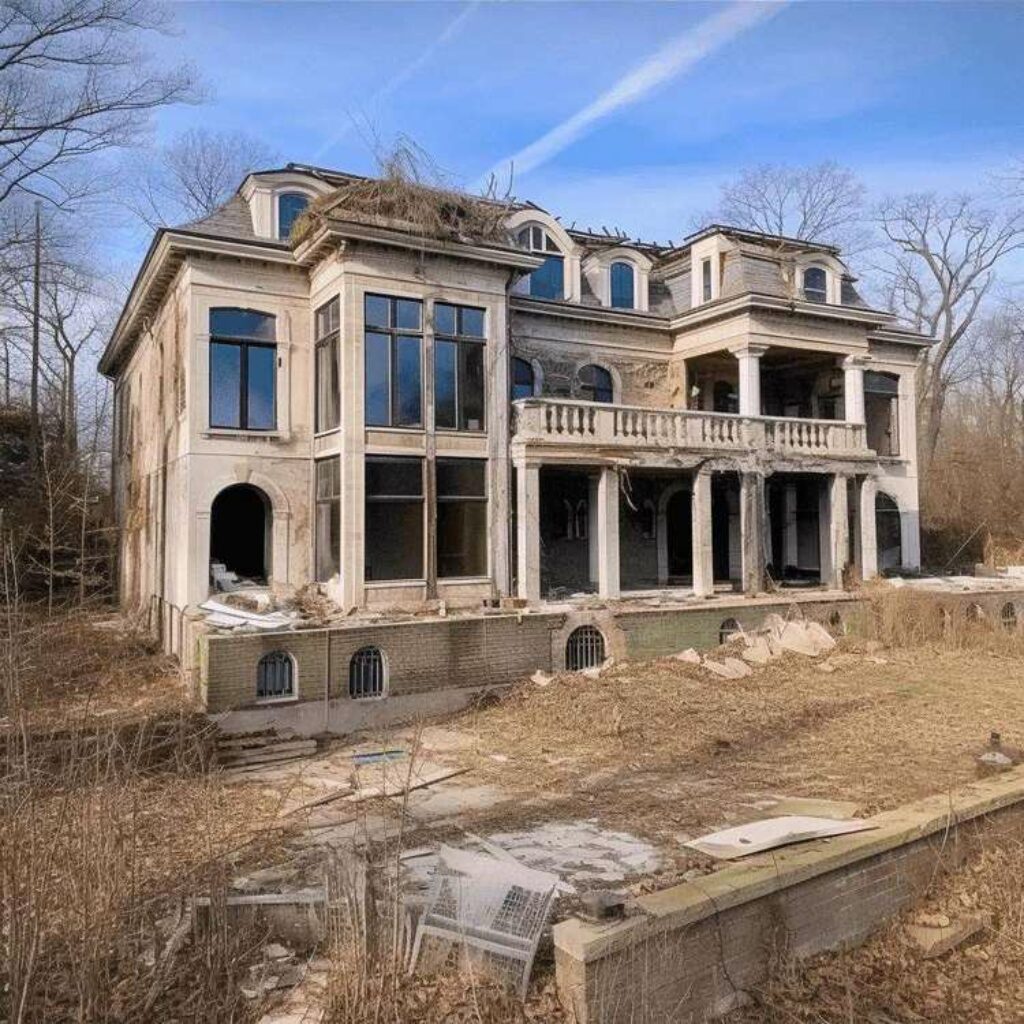
Buying an Affordable Abandoned or Distressed Home
Buying an abandoned or foreclosed home can be a cheap way to purchase real estate. Follow critical steps to find and buy discounted properties.
Related Topics (Sponsored Ads):

Conduct Extensive Research to Find Promising Listings
The first critical step is investing sufficient time searching real estate platforms like Zillow, Realtor.com, Trulia, Homes.com, and Redfin for current listings of abandoned homes, foreclosures, and other distressed properties in your desired locations nationwide. You can filter specifically for foreclosures in advanced searches. Look broadly at both rural and urban areas near employment hubs. Subscribe to a foreclosure listing alert service that will notify you as soon as new distressed properties hit the market. Regularly monitor sites like Auction.com, Hubzu, and HomeSearch for upcoming foreclosure auctions where you can sometimes purchase homes far below market value. Drive and walk target neighborhoods looking for signs of abandoned homes like overgrown lawns, broken windows, or eviction notices on doors. Research property records to identify owners of any abandoned homes you find. Check HUD frequently for incredible deals on government-owned foreclosed homes. Setting up persistent customized searches and alerts across these various platforms takes time. Still, it is the most effective way to catch ideal discounted buying opportunities as soon as they become available. When you see a promising listing, dig deeper into its history and condition before pursuing it further. Check public records for past sales, transactions, code violations, or liens. Drive by the property and try to assess the external situation from the street. Walk the lot looking for signs of neglect, refrain from trespassing pass. Some abandoned homes may require extensive repairs or even demolition. Foreclosures often have deferred maintenance and poor interior conditions, too. Estimate potential rehab costs and factor them into offer pricing to avoid overpaying. Doing this due diligence protects you from buying someone else’s neglected money pit.
Explore "Rent-to-Own" Programs as Alternatives
An alternative to buying a distressed home outright is entering a rent-to-own or lease-to-own agreement. This creative approach allows you to get into a home with little money down upfront. You sign a 1-3 year lease and pay an affordable monthly rent below market rates. A portion of that rent payment then goes towards the eventual purchase of the home at the end of the lease term. Rent-to-own arrangements can help people lacking savings, poor credit, or low income get into homeownership by improving their financial profile over time. The key is finding reputable rent-to-own programs, as some can be predatory. Search sites like Rent2BuyAmerica and Lease2Buy to find legitimate rent-to-own homes in your desired areas. Look for terms that build your equity with each on-time rent payment and give you a fair market purchase price option when the lease ends. Avoid deals with balloon payments or overpriced purchase options. Even vacant foreclosed homes purchased by investors can be rented-to-own in some cases. Ensure you have a clear path to ownership, reasonable rent prices, and inspection rights in any agreement you sign. Used strategically, rent-to-own programs enable home ownership through an affordable, non-traditional route. They provide time to save for a down payment or rehab credit while locking in below-market housing costs. Just be sure to partner with legitimate providers for a smooth journey to ownership.
Submit Competitive All-Cash Offers on Properties
When buying a distressed property directly, an all-cash offer is often most appealing to sellers of foreclosures and abandoned homes. These properties frequently sell at significant discounts to market value, so cash deals locking in savings make sense over financing. Once you identify a suitable abandoned or foreclosed home and accurately assess its condition through inspections and repair estimates, submit an offer at least 15-25% below the asking price as a cash buyer. Highlight in your bid how not needing financing and your flexible timeline benefits the seller by removing appraisal and lender delays. Also, emphasize how your offer reduces uncertainty versus contingent deals. Being willing to close quickly with an unconditional cash offer gives you negotiating power over financed buyers. Then, patiently yet firmly stick to your offered price based on realistic property valuations and expected rehab costs. Many distressed homes sit on the market for a while, so room exists to negotiate excellent bargains. Just complete thorough inspections after offer acceptance to confirm the condition before closing. With the proper prep work and pricing analysis, motivated cash offers can secure distressed properties at substantial discounts for significant savings and homeownership opportunities.
Conclusion
Buying an affordable abandoned or foreclosed home takes commitment, diligent market research, patience, and savvy negotiating – but it can be one of the best ways to purchase real estate cheaply in today’s market. Regularly check real estate platforms for new distressed listings and be ready to act quickly. Assess properties thoroughly to make competitive cash offers accounting for repairs needed. For alternative paths, explore quality rent-to-own programs, allowing time to improve finances. With persistence and an analytical approach, you can secure an ideal, affordable, distressed home for tens of thousands below market value. Just be sure to complete inspections, accurately estimate costs, and don’t overpay. Distressed home buying requires effort, but bargains exist if you know where to look and how to value fixer opportunities properly. Purchasing the right abandoned or foreclosed property can be a smart move for an affordable entry into homeownership.
Related Topics (Sponsored Ads):
Discover More






